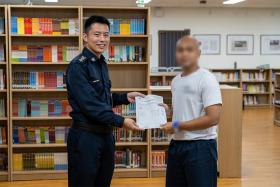Annual govt spending on early childhood sector set to double
New measures focused on children from lower-income families
Quality pre-school education will soon be more accessible, allowing children in Singapore to have a good start in life.
Annual spending by the Government on the early childhood sector is set to double to more than $2 billion within the next few years, Deputy Prime Minister Heng Swee Keat announced yesterday. This is up from the $1 billion spent in 2018.
"Good education provides a strong foundation for children to grow, realise their aspirations, and continue a journey of lifelong learning," he said. "We are determined to give every child, regardless of circumstances, a good start in life."
Many of the measures are focused on helping children from lower-income families, putting them on a more equal footing with others.
Mr Heng said: "This substantial investment is how we maximise every child's potential, regardless of family circumstances."
Government-supported pre-school places will be increased to 80 per cent by 2025, up from around 50 per cent.
In the primary to pre-university school years, education is already heavily subsidised for Singaporeans. Primary school is free for all citizens, while the secondary school fee is $5 a month. Students pay only a few dollars in miscellaneous fees.
Mr Heng said those from lower-income families will receive even more help. For instance, the Ministry of Education's Financial Assistance Scheme (FAS) will be enhanced, with the annual bursary quantum for pre-university students raised from $900 to $1,000.
Transport subsidies for all students and school meal subsidies for secondary school students will also be increased. The enhanced FAS will cost an additional $9 million per year - or a total of $52 million per year.
At the higher education level, the cost of bursaries will rise from $148 million to $198 million per year.
Starting from this academic year, students from lower- and middle-income families in polytechnics and autonomous universities can benefit from higher bursaries.
Bursaries for full-time Institute of Technical Education (ITE) students will also be improved.
On top of the bursary, those from the lowest-income tier will receive a full fee subsidy. ITE students from lower- and middle-income households will benefit from an increase in the cash bursary quantum by up to $200 a year.
By the time a Singaporean turns 16, he would have received more than $180,000 of education subsidies, Mr Heng said.
Experts welcomed the move to help the young to reach their potential.
Education economist Kelvin Seah from the National University of Singapore commended the Government's focus on lower-income students, noting that studies have suggested there is an achievement gap between students from higher-income families and those from lower-income backgrounds.
"Addressing this achievement gap through policies designed to help the lower-income students would serve to reduce inequality and increase socioeconomic mobility," he added.
Get The New Paper on your phone with the free TNP app. Download from the Apple App Store or Google Play Store now


